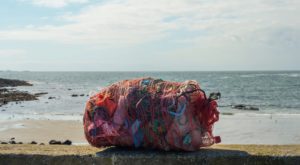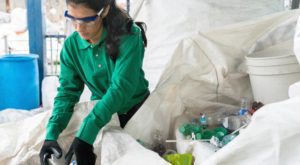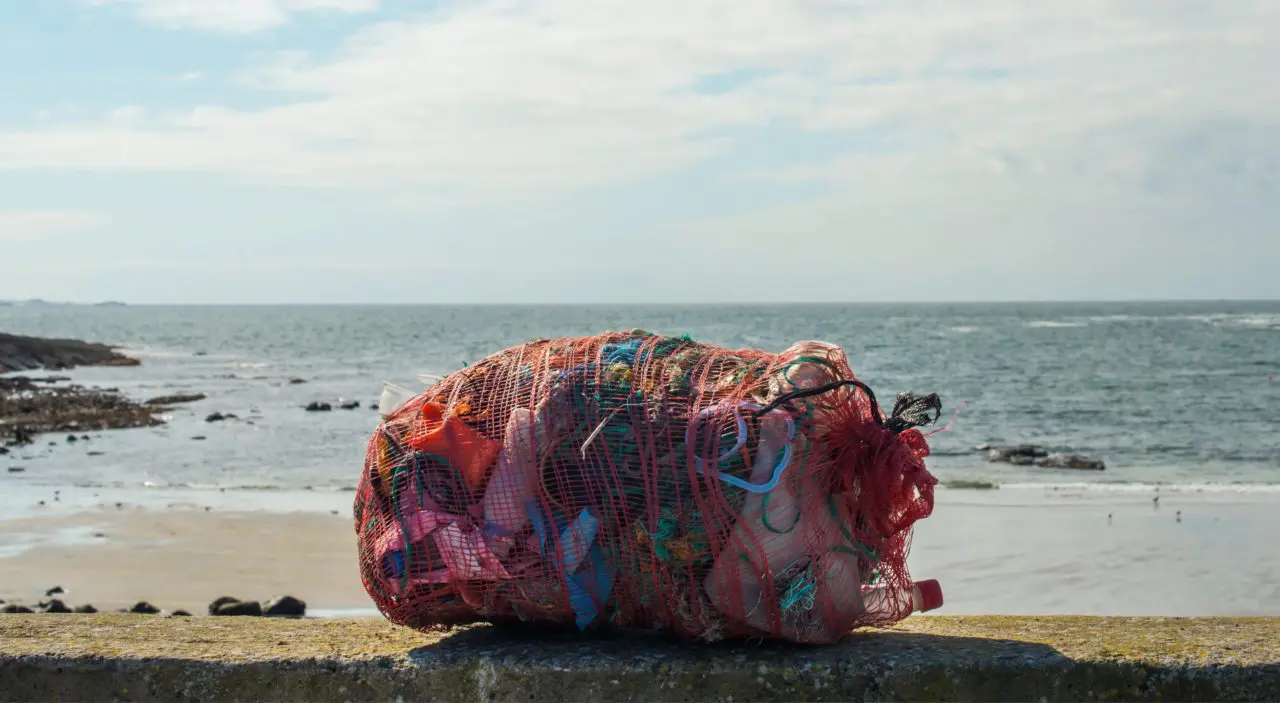Did you know the majority of the world’s ocean litter comes from a handful of countries where waste management infrastructure has lagged behind population growth and increasing packaged goods purchases? Often, trash ends up in the street, gutter or nature in these countries. It makes its way into storm drains, canals or rivers, and ultimately winds up in oceans, seas, or other large bodies of water. Even here in the United States, too much of our plastic ends up in landfills when it could be recycled. Plastic waste is a global issue that we can work to address locally by changing the way we think about plastic.

Changing the way we think about plastic waste
Like many other materials, plastic can tend to move in a linear model: “make, use, dispose.” The result: large amounts can end up either buried in landfills or worse, littering the ocean.
But what if instead of thinking of used plastic as waste or trash to throw away, we thought of it as a valuable resource? A resource that can become new plastic for products or wax to create crayons or energy to fuel transportation. Emerging technology is making it possible for us to create a more sustainable, circular model where plastic is recovered and reused.
If we no longer think about plastic as waste or trash – if communities across the globe can use it as a resource to create new things from plastic they throw away – then there’s a reason to recover plastic, reuse it and keep it out of the ocean.
Keeping plastic out of our ocean
To keep plastic out of the ocean, we need to recover used plastic and reuse it. Companies that make and use plastic are transitioning to a circular economy for plastic by investing in the infrastructure needed to collect used plastic and in the advanced technologies that reuse it.

Recovery/collection: upgrading outdated infrastructure
America’s recycling infrastructure was not designed to collect the many types of packaging we all use today. However, multiple efforts are underway to collect more types of plastic for recycling, keeping them out of our environment. A few examples:
- The Recycling Partnership is investing in local communities to make curbside recycling more accessible and effective to expand the types of plastics that are collected and repurposed.
- The Wrap Recycling Action Program (WRAP) supports the recycling of plastic bags and wraps at more than 18,000 grocery and retail stores across the nation.
- Materials Recovery for the Future (MRFF), a pilot program in Pennsylvania, demonstrates that flexible plastic packaging (e.g., pouches, liners, and wraps) can be collected in curbside bins and recycled. (But don’t put flexible packaging in your curbside bin just yet, this development is still in its testing phase.)
Reuse/recycling: innovative new technologies to reuse plastic
Once it’s collected, plastic must be processed and reused to make new products. While recycling companies are enhancing existing traditional recycling machinery to reuse more plastic (e.g., adding optical sorters, robotics, artificial intelligence), emerging technologies are creating new ways to recycle and reuse plastic waste.
Have you heard of advanced plastic recycling? Advanced recycling technologies break down plastic into its molecular building blocks, which are then used to make new plastic, industrial chemicals, transportation fuels and other products. Advanced recycling has the potential to significantly expand the market for used plastic, keeping it in productive use and stopping plastic waste from entering the environment.
The combination of enhanced traditional recycling and advanced recycling technologies will help lead to the reuse, recycling or recovery of all plastic packaging in the United States by 2040 – the goal of U.S. plastic makers.
Beyond the United States
The global non-profit Alliance to End Plastic Waste is working to develop, accelerate and deploy solutions to prevent plastic waste from entering our ocean, focusing on global hot spots that are primary sources of ocean plastic. The Alliance brings together people, businesses, governments and organizations to find new ways to rethink, recover and recycle plastic waste.
What can you do to help?
- Keep yourself informed! Explore and come back to this site for more information on reusing/recycling plastic and keeping it out of our ocean.
- Recycle as much as you can. Learn how to recycle more plastic here.
- Look for drop-off locations for plastic bags and wraps here.
- Look for the How2Recycle label on plastic packaging and follow the directions for proper recycling.
- Participate in Keep America Beautiful’s Great American Cleanup where you live.
Continue to visit America’s Plastic Makers: Making Sustainable ChangeSM to learn more about how communities, companies, and brands are recycling and using recycled plastics.

